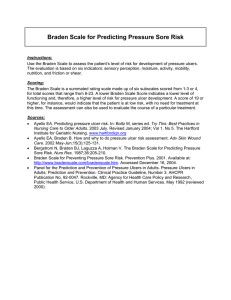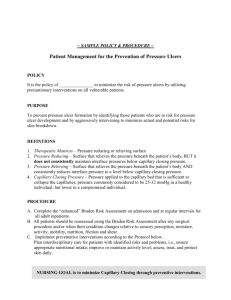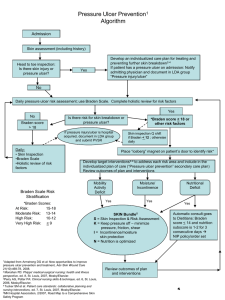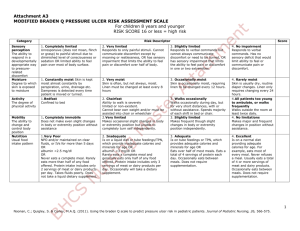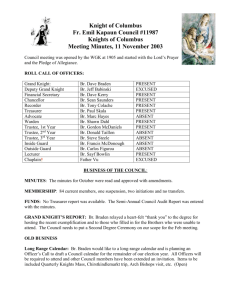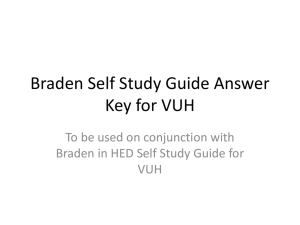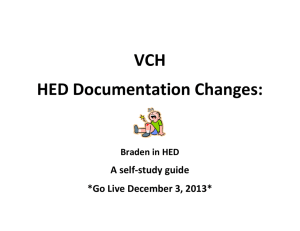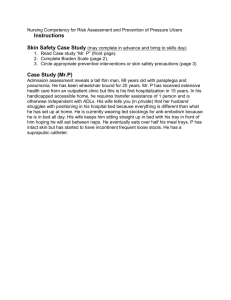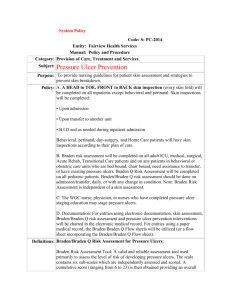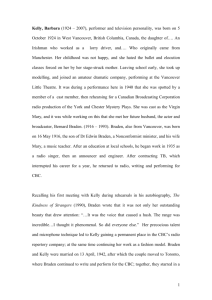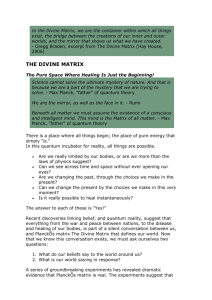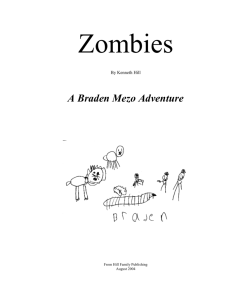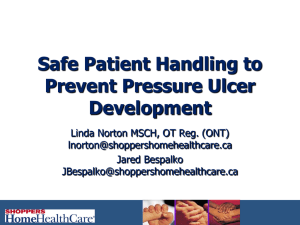Braden Score: Case Studies 1 & 2
advertisement
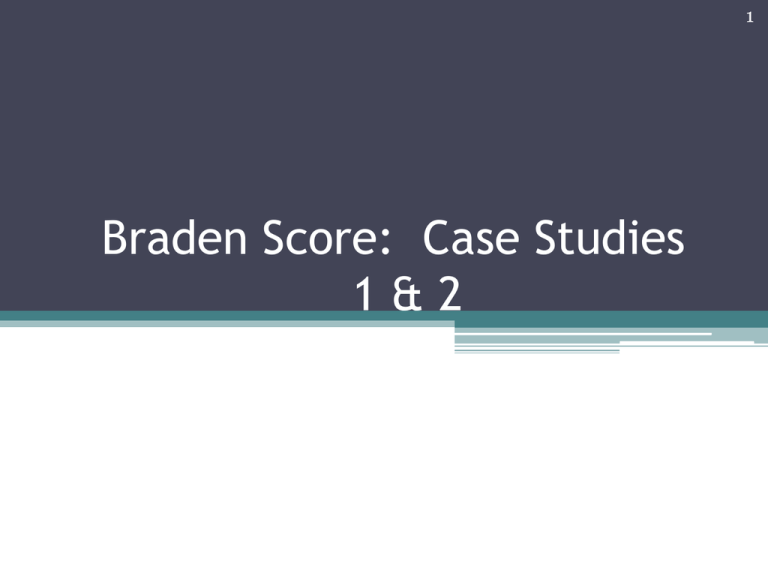
1 Braden Score: Case Studies 1&2 2 Case study # 1 • 75-year-old male with Non-Hodgkins lymphoma, Alert and oriented • Height 5’9”, Weight 160 lbs. 3 Braden Score • Moisture 3 4 Braden Score • Activity 2 5 Braden Score Nutrition 2 6 Braden Score • Friction/Shear 2 7 Braden Score Case Study # 2 8 Case study #2 • Mrs. West is a 79- year old widowed female admitted to the nursing home after a right hip fracture. • She lives alone. Her daughter lives close by and visits frequently. 9 Case study #2 • Past Medical History includes: ▫ ▫ ▫ ▫ Hypertension DM Type II insulin dependent Anxiety Disorder Osteoarthritis 10 Case study #2 • During hospitalization: ▫ Her anti-hypertension medications were restarted and adjusted. ▫ After surgical hip pinning, PT and OT were ordered on the first day post-op for exercises, ROM, transfer, and ADL training. She refused therapy due “I just don’t want to get out of bed yet”. 11 Case study #2 Post-Op day 1 • PT reports that when she allows them to get her out of bed she requires assistance of two for safe transfers. OOB usually only once a day. Staff often find her slumped in the chair and have to put her back to bed. 12 Case study #2 • She reports pain in right hip 5/10 and 2/10 in left knee from arthritis. • She is refusing any pain meds , “its too much trouble for those little girls, they are busy.” 13 Case study #2 • She only consumes 50% of her food at each meal. She able to feed herself. • Her height and weight are: ▫ 63 inches (5 foot ,3 inches) ▫ 105 pounds 14 Case study #2 • She is continent of urine but has occasionally has been found to be wet when staff have turned her. 15 Case study #2 • Preferred position is supine with head of bed elevated with pillow under right leg. 16 Case study #2 Post-Op day • Night shift nurse noted that there is a 1.0 CM X 2.0 cm non-blanchable reddened area on coccyx. 17 Case study #2 Discharge Day • She is discharged to NH for PT/OT 18 Braden Score What is the total score? 19 20 Case study # 1 • Spends most of the day in bed. Makes occasional slight changes in body or extremity position but unable to make frequent or significant changes independently. • Occasionally slides down to foot of bed, requiring some assistance to move back to the top. 21 Case Study: # 2 • Able to walk a short distance to the chair with assistance • Hgb = 8.5, Serum Albumin 3.1 22 Case Study: # 2 • Incontinent of stool • Continent of urine – uses urinal as needed • Skin occasionally moist from incontinence 23 Case Study # 2 • Admitting Orders: ▫ Tube feeding formula 400cc q 4 hours per PEG ▫ Dietician consult for tube feeding recommendations ▫ Up in chair daily 24 Case study # 2 Using the Braden Scale, what is Mr. W.G.’s sensory perception score? A. B. C. D. 1 (Completely Limited) 2 (Very Limited) 3 (Slightly Limited) 4 (No Impairment) 25 Sensory Perception • 4 (No Impairment) 26 Case study # 2 Using the Braden Scale, what is Mr. W.G.’s moisture score? A. B. C. D. 1 (Constantly Moist) 2 (Very Moist) 3 (Occasionally Moist) 4 (Rarely Moist) 27 Moisture • 3 (Occasionally Moist) 28 Case study # 2 Using the Braden Scale, what is Mr. W.G.’s activity score? A. B. C. D. 1 (Bedfast) 2 (Chairfast) 3 (Walks Occasionally) 4 (Walks Frequently) 29 Activity • 2 (Chair fast) 30 Using the Braden Scale, what is Mr. W.G.’s mobility score? A. B. C. D. 1 (Completely Immobile) 2 (Very Limited) 3 (Slightly Limited) 4 (No Limitations) 31 Mobility score • 2 (Very Limited) 32 Using the Braden Scale, what is Mr. W.G.’s nutrition score? A. B. C. D. 1 (Very Poor) 2 (Probably Inadequate) 3 (Adequate) 4 (Excellent) 33 Nutrition • 3 (Adequate) 34 Braden Score • Sensory 4 35 Case study # 1 Using the Braden Scale, what is Mr. W.G.’s friction and shear score? A. 1 (Problem) B. 2 (Potential Problem) C. 3 (No Apparent Problem) 36 Friction and Shear • 2 (Potential Problem) 37 Case study # 1 Based on Mr. W.G.’s total Braden Scale Score, indicate his level of risk for developing a pressure ulcer. A. B. C. D. E. 9 or less = Very high risk 10-12 = High risk 13-14 = Moderate risk 15-18 = Mild risk 19-23 = Generally not at risk 38 Based on Mr. W.G.’s total Braden Scale Score, indicate his level of risk for developing a pressure ulcer. A. B. C. D. E. 9 or less = Very high risk 10-12 = High risk 13-14 = Moderate risk 15-18 = Mild risk 19-23 = Generally not at risk
